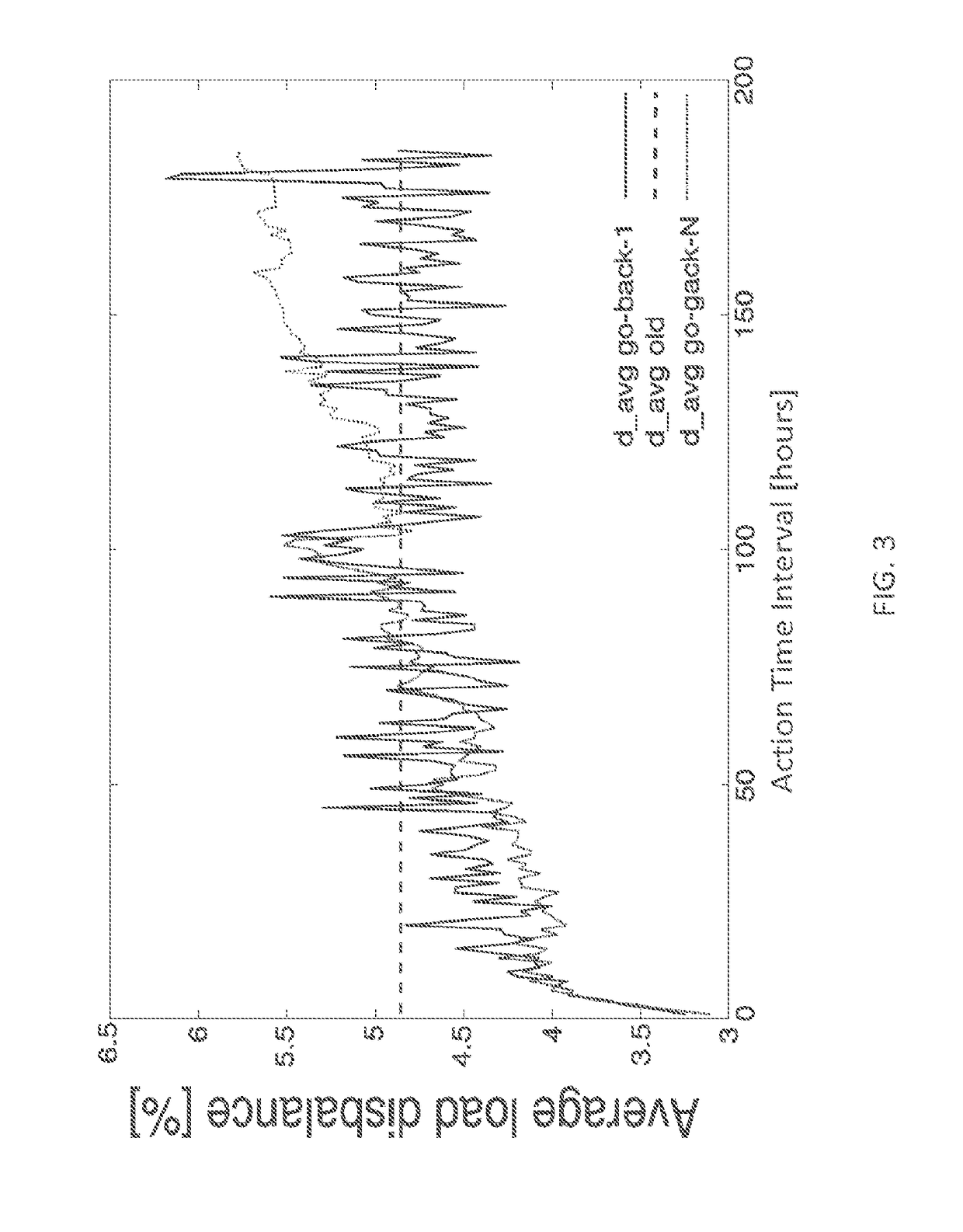Method and system for dynamic intelligent load balancing
a load balancing and dynamic technology, applied in the direction of electric variable regulation, process and machine control, instruments, etc., can solve the problems of complex systems for managing the distribution of power, reducing efficiency, and little help in analysis or improvement of distribution, so as to reduce load differences
- Summary
- Abstract
- Description
- Claims
- Application Information
AI Technical Summary
Benefits of technology
Problems solved by technology
Method used
Image
Examples
Embodiment Construction
[0025]An embodiment of the invention is a method for dynamic intelligent load balancing (DILB) in a power distribution network that applies a hierarchical, client-server addressing concept and identifies the load balancing problem among phases in three phase systems. Preferred methods of the invention are readily applicable to every part of a power distribution network, without essential changes to the last-line power installation. Preferred embodiments provide a more stable power distribution network with improved characteristics and decreased active power losses. Preferred embodiments identify load balancing problems among phases in three-phase systems and utilize a modified legacy network of power meters or an existing smart network of power meters to implement a control algorithm that achieves dynamic, intelligent load balancing
[0026]A preferred embodiment of the invention is a smart phase switch that can be added to a commonly used power meter. The DILB-extended power distribut...
PUM
 Login to View More
Login to View More Abstract
Description
Claims
Application Information
 Login to View More
Login to View More - R&D
- Intellectual Property
- Life Sciences
- Materials
- Tech Scout
- Unparalleled Data Quality
- Higher Quality Content
- 60% Fewer Hallucinations
Browse by: Latest US Patents, China's latest patents, Technical Efficacy Thesaurus, Application Domain, Technology Topic, Popular Technical Reports.
© 2025 PatSnap. All rights reserved.Legal|Privacy policy|Modern Slavery Act Transparency Statement|Sitemap|About US| Contact US: help@patsnap.com



